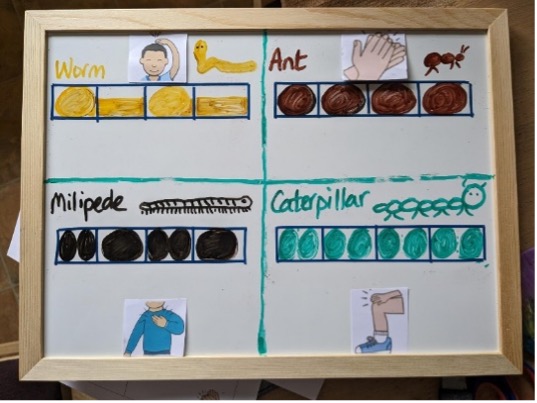Portable Transition Resource for Stage 3 and Beyond
My name is Ceri Turner and I spent 13 years at Drummond Additional Support Needs School in Inverness as a Class Teacher. The last 2 and a half of these, I worked part-time in the music department alongside Emily McQuarrie. We developed our Figurenotes use through individual tuition and a couple of mixed-ability bands.
Figurenotes allowed all the pupils to participate as it could be easily adapted for them, using keyboards and various forms of percussion. Since taking early retirement to care for my mother, I have been developing my use of Figurenotes for mainstream children of various ages through 1-1 keyboard tuition.
I’d like to share a DIY transition resource I created after inspiration from the Developing Your Practice course, as well as my takeaways from working with Figurenotes over the last few years.
How I use Figurenotes
With two brothers in particular, a previous teacher using standard music tuition didn’t manage to engage them enough. However, using Figurenotes, the matching ‘play what you see’ made more sense. The boys have asked me if they can play their favourite pop and TV theme tunes, which they could after I wrote it out in Figurenotes using the Notate software.
With two younger pupils I work with, aged 3 and 5, both of them could play tunes immediately using Figurenotes, starting with tunes they would recognise. It’s hugely motivating for them all to be able to play something quickly and for me, it’s great to have a clear idea for progression to standard music when it’s right for them.
However, I did feel I was needing more direction and input to guide me and recently attended the online Figurenotes 3-day Zoom workshop: Developing Your Practice. It was really lovely to be with people on-screen, learning together. This is so vital for anyone working on their own.
What I learned
On day 1 – Rhythm – It was great to see the ideas of others and share what I had done. It was really encouraging to know I was working along the right lines. I used the theme of minibeasts and the different minibeast names to teach rhythms and note values. This is a theme that is part of the P1/2 core curriculum, so would be familiar from school.
On day 2 – Composition – I loved the ideas for composition shared. I decided to use a painting of mine of a boat trip to Jura for a short composition. I went away with lots of ideas for composition for the children I work with.
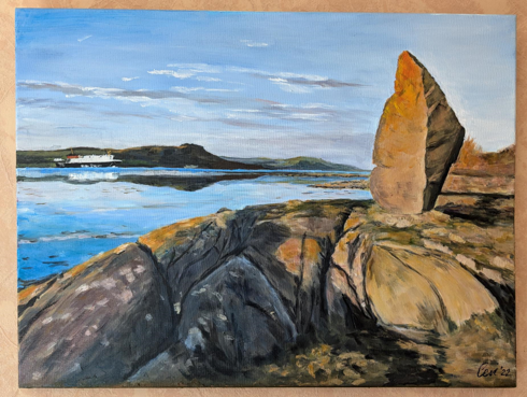
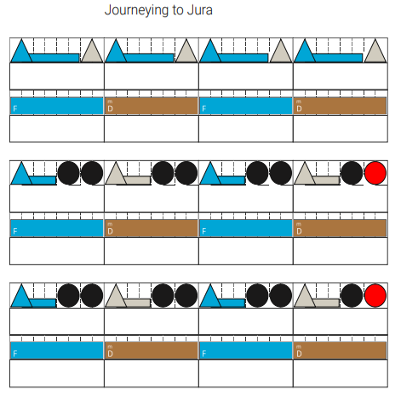
On day 3 – Group work – It was great to work collaboratively and interact over the modelled resource of the gingerbread man. I went on to use it with both of the young pupils, involving their parents in the experience. They loved composing the tunes for each of the characters, using a magnetic board, Figurenotes magnets, and coloured pens to do notes of shorter or longer value.
On my 1-1 follow up day I really wanted to ask about transition ideas for the older boy I work with, as he’s ready to translate Figurenotes into standard notation. This became very apparent after he presented a piece he’d learned initially with Figurenotes stage 1 in two parts. He presented this at his school as part of the school’s Gaelic week, using standard notation with Figurenotes colours and shapes.
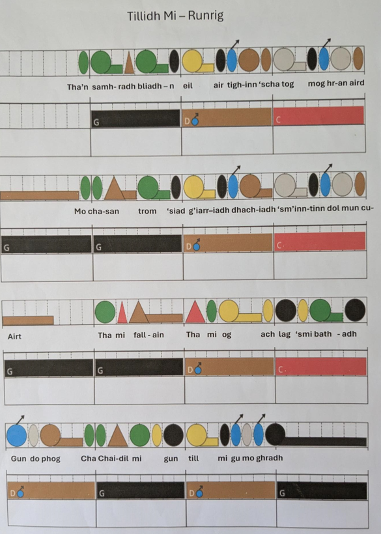
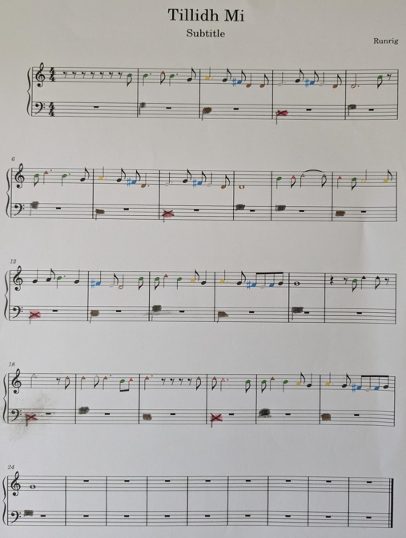
Portable Transition Game
After my individual session I was inspired to get a large mat and mark it out with a standard music stave using masking tape. Little muffin cases became the individual notes. We can now play games and compose to help the transition between Figurenotes and standard notation. I also made an A4 laminated stave with notes, backed with velcro, so we could practice placing the Figurenotes.


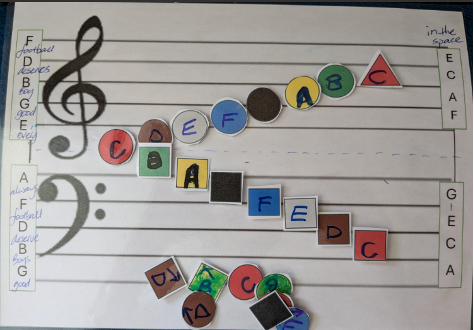
I was used to using a lot of visual and kinesthetic tools at the additional support needs school. It is such a revelation that strategies mostly used in such settings are so useful when teaching in mainstream settings too.
Lights go on when the pupils encounter this way of interacting with music, especially rhythm and note values. Composition is made much easier, like playing a game.
It’s wonderful having the Figurenotes community to pick up on and share ideas when you are not teaching within a school setting anymore. I recommend the Developing Your Practice course for anyone looking to develop what they do. Lots to learn and lots of fun!


